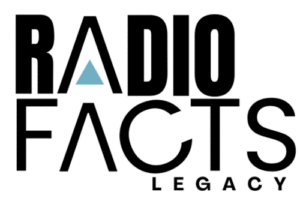An astronomer discovered an asteroid minutes before it crad into earth, causing the asteroid alert systems to launch into action last week. The asteroid was determined to be on a collision course with the planet fewer than two hours after the astounded astronomer discovered it.
Called 2022 EB5, the asteroid was discovered by Krisztián Sárneczky, an astronomer at the Konkoly Observatory in Hungary. The astronomer was having an uneventful night, going over telescope imagery, when he noticed an unidentified spec of light.
Sárneczky decided to let the telescope continue scanning the skies before returning to the exact location around half an hour later. It was not exceptionally bright or moving very fast. When he returned, the spec of light had gone.
The spec of light was noticed again by Sárneczky in a different location. This time it appeared as a streak in the sky, as though it was traveling very fast due to the long exposure times of the telescope images.
This puzzled Sárneczky; how could the object have accelerated so much? In the beginning, he believed he had stumbled upon two separate asteroids. Since the first location was now devoid of any objects, that couldn’t have been the case.
The asteroid was approaching earth, and fast was the only way his observations made sense. Sárneczky calculated when it would be likely to hit the planet if it were an incoming asteroid, Using new data of the object’s coordinates. An hour and a half was the answer.
“I’ve dreamed of such a discovery many times before, but I really never believed in it,” the astronomer wrote on the Hungarian Astronomical Society’s website. “It seemed so unlikely…”
Alarm systems at the European Space Agency (ESA) and NASA were set off after Sárneczky uploaded his data to an asteroid confirmation page.
The asteroid was around 6.5 to 10 feet in size. Luckily, relatively small, it was soon determined. Damage to a populated area seemed unlikely because its predicted impact location was in the Norwegian Sea.
Several photos of the asteroid as it approached were snapped by Sárneczky. Taken 10 minutes before impact, when it was just 6,800 miles away from earth, it would have been traveling at around 16 kilometers per second or roughly 35,700 miles per hour.
Sárneczky called the detection of the asteroid his proudest moment as an astronomer; he said speaking to Newsweek. He discovered a comet so far this year.
Asked whether he was concerned about the asteroid before its impact, he said: “Not really, because even after the first observations, it seemed to be a relatively small body. If the impact had taken place over a populated area, it would not have caused any damage.
“It was a great opportunity to test the warning systems of ESA and NASA. Both systems worked great.”
Evidence of an atmospheric impact was gathered by infrasound detectors based in Iceland and Greenland, although no visual detections of the asteroid’s fireball had been found as of Tuesday. According to ESA, this could be because its impact location was so remote.
Because it is not uncommon for small asteroids to strike the earth, asteroids similar in size to the 2022 EB5 can be expected to collide with our planet every year, ESA states. Yet, there have been only five instances of such an asteroid being detected prior to impact.
Professor Peter Brown is director of the Elginfield Observatory at the Department of Physics and Astronomy at the University of Western Ontario, Canada. Brown told Newsweek, as technology advances, he expects detection of small asteroids to become more common.
“The detection of small asteroids is now becoming more routine with the maturation and advancement of asteroid surveys like ATLAS, PanSTARRs, and the Catalina Sky Survey,” he said. “I expect such observations to become more routine as additional survey capabilities come online, particularly the Vera Rubin Observatory which should detect several meter-sized impactors prior to collision per year when it comes online in 2023-2024.”
Paul Chodas, director of the Center for Near-Earth Object Studies (CNEOS) at NASA’s Jet Propulsion Laboratory, said in a press release: “Tiny asteroids like 2022 EB5 are numerous, and they impact into the atmosphere quite frequently—roughly every 10 months or so,”
“But very few of these asteroids have actually been detected in space and observed extensively prior to impact, basically because they are very faint until the last few hours, and a survey telescope has to observe just the right spot of sky at the right time for one to be detected.”


